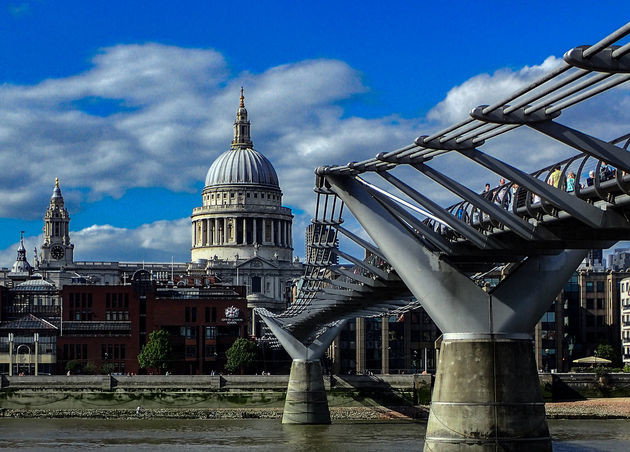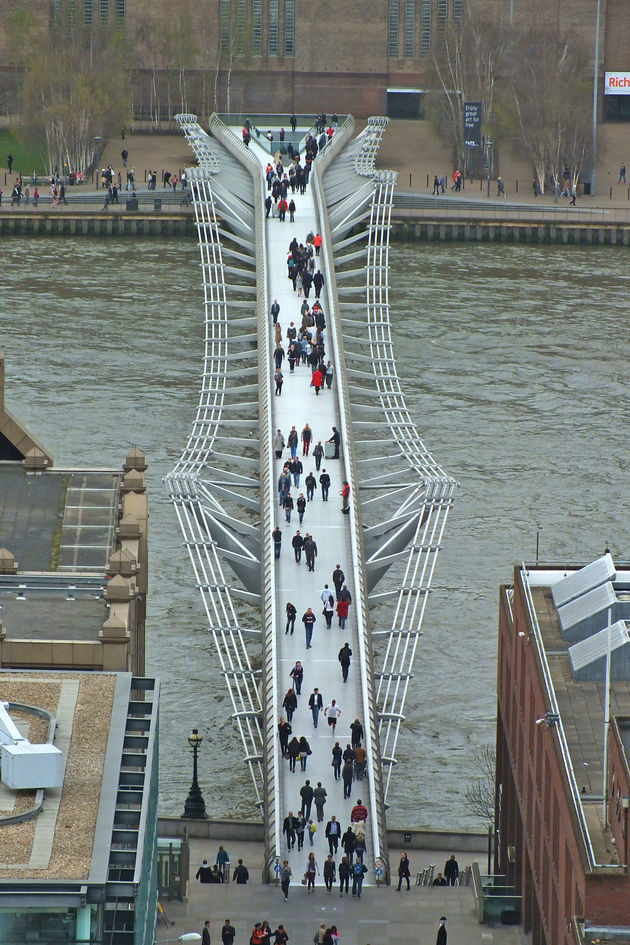
Art, architecture and engineering came together to create a “ribbon of steel” that bridges the two banks of the Thames by London’s St Paul’s Cathedral
The Millennium Bridge forms part of London’s pedestrian infrastructure, linking the North Bank to the South Bank. It was the first new bridge to cross the river Thames in London since Tower Bridge was completed in 1894 and is the capital city’s first dedicated pedestrian crossing.
The idea for a “ribbon of steel” crossing the Thames won an international design competition held in 1996 by Southwark Council alongside the Financial Times and the Royal Institute of British Architects. The unique design concept for the bridge was the result of the collaboration between British architect Norman Foster, founder of Foster + Partners, and the late sculptor Sir Anthony Caro along with engineering team Arup.
Read more: Norman Foster on which of his works ‘still has the power to shock’
The winning design proposed a minimal intervention across the river that would offer panoramic views of the city and linked St Paul’s Cathedral to the north with Shakespeare’s Globe Theatre and the Tate Modern art gallery on the southern Bankside.
The Millennium Bridge’s seemingly simple form required a feat of engineering. Constructed with aluminium, steel and concrete, the shallow suspension bridge spans 320 metres and consists of two Y-shaped armatures that support eight cables running along the sides of the four-metre-wide deck, four cables on each side. The clever design ensures that the cables never rise enough to obscure the view of enjoyed by the users. The bridge also frames views of its two monumental bookends – St Paul’s on the northern side and the Tate Modern on the south bank of the river. Lighting runs along the structure and at the night the bridge is transformed into what the designers have dubbed a “blade of light”.

The bridge was opened by Queen Elizabeth II in June 2000 as part of a series of celebrations to mark the new millennium and during its inaugural weekend 100,000 people crossed it. However, it was the rhythmic movement of the vast number of people crossing the bridge that caused the infamous wobble – and the potential danger of the swaying bridge meant it was temporarily closed just two days after opening.
Extensive investigations went into what caused the wobble and how to mitigate it. Dampers were fitted beneath the deck to reinforce the footpath without compromising the overall aesthetic. This has since become the standard for bridge building around the world. The swaying of the bridge ceased, but the nickname “Wobbly Bridge” lingered, even after it reopened to the public in February 2001.
The bridge was intended to encourage more activity on the embankment near St Paul’s Cathedral and to celebrate human movement in the city. It also brings visitors straight to the doors of one of Europe’s largest art galleries.
Architect Norman Foster is one of Britain’s most celebrated designers, known for his elegant, modern steel and glass buildings. He is one of the world leaders in high-tech design and has won many architecture awards, including the Stirling Prize, the Pritzker Award and the Aga Khan award.
Sir Anthony Alfred Caro was an abstract, modernist sculptor who often worked with metals from discarded industrial objects. He was celebrated as one of the greatest British sculptors of his generation, and spent much of the 1990s developing what he called “sculpitecture”. The bridge collaboration with Foster combined Caro’s interest in steel as a material, as well as the combination of engineering, architecture, and minimal form.



















